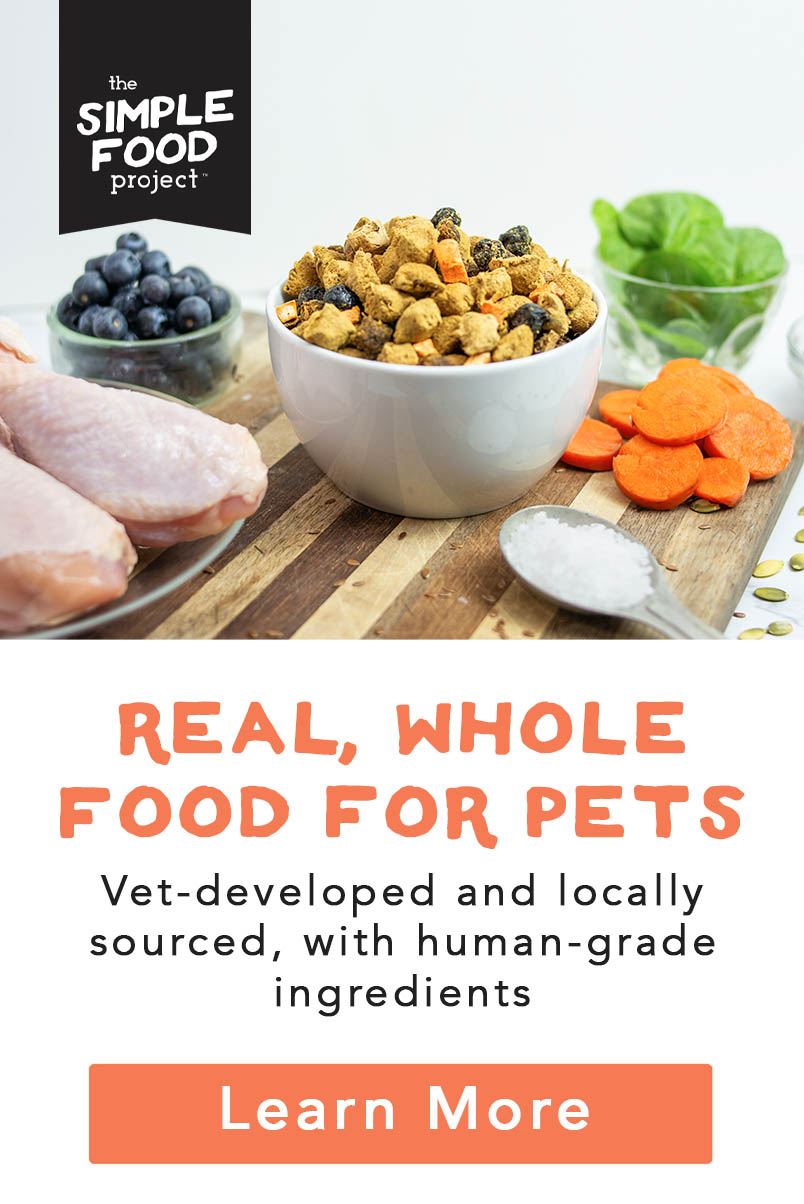3 Dubious Pet Food Label Tricks You Need To Know
- Published:
- at
You’re doing your due diligence to find good dog food: you’re reading ingredient labels, decoding Guaranteed Analyses, but you still may not be getting what you pay for. Practices like ingredient splitting are at work, and some rules you may rely on are actually defunct. Once you’re aware of them, though, you’ll know how to navigate these tactics! (And learn a few new tips and tricks to navigate labels in the process…)
Using these newfound skills, you can get exactly what you want in your four-legger’s diet and avoid what you don’t.

On the Agenda
Ingredient Splitting
Ingredient splitting is a technique used to make it appear as if low-quality ingredients (think grains or vegetable byproducts) are less abundant.
How It Works
Ingredients are split into sub-ingredients so that they appear farther down on the ingredient list. If each of these ingredient parts were combined, they’d place higher in the ingredient list (likely before that “first” ingredient).
Common Ingredients Used
Whole foods like peas can be broken down into all of these smaller parts and be labeled as entirely separate ingredients. These are known as sub-ingredients or by-products.
pea protein, pea flour, pea starch, pea fiber
wheat gluten, wheat bran, wheat germ, wheat flour
corn starch, corn gluten meal, corn flour, cornmeal, corn gluten
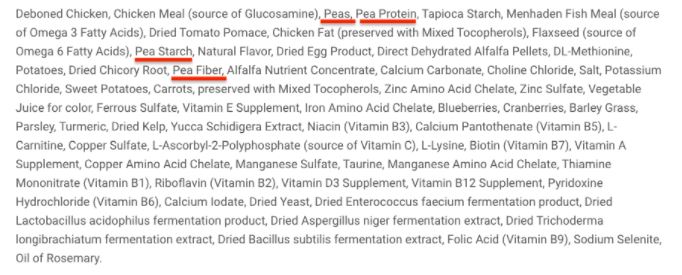
Why This Technique Is More Than A Misleading Practice
Sub-ingredients are commonly used in pet foods since they are readily available and cheaper to produce and can be problematic for a few reasons.
#1 Pet food can bulk up protein percentages using sub-ingredients like pea protein
When kibble guaranteed analysis’ say there’s X% of protein, they don’t have to specify the source. Legumes happen to be full of plant-based protein, so when a pet parent reads a label, there’s no way of knowing whether “protein” refers to plant protein or meat protein.
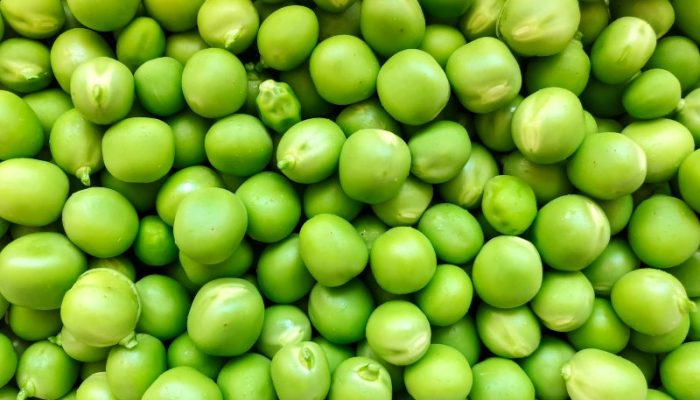
#2 It obliterates the common rule of making sure meat is the 1st ingredient
The only steadfast rule about ingredient labels, per AAFCO, is that the 1st ingredient listed on an ingredient label has to be the largest part of the recipe, so pet parents used it as a guide when looking for quality pet food.
First 5 Ingredients: Bison Meal, Peas, Pea Protein, Tapioca, Dried Egg
But the ingredient-splitting technique can circumvent this rule, making it null and void.
If you combined the second and third ingredients into one pea ingredient rather than splitting them into pea and pea sub-ingredient, the ingredient label would read more like this:
Peas
Bison Meal
Tapioca
Dried Egg
Ultimately, the ingredient-splitting technique makes it that much more difficult to make sure your dog is eating quality food– one with the right proportions of ingredients. Because if your dogs eating 80% legumes and 20% poor-quality meat, those proportions don’t meet the unique dietary needs of your dog, the carnivore.

Just consider the DCM findings released by the FDA. The overwhelming consensus was that legumes as a food group were bad (spoiler, they’re not). Consumers were even looking for grain-in food and continue to, because of it. But the biggest takeaway should be that you can’t use the high percentage proportions of peas/potatoes/legumes that grain-free kibble is using.
The bottom line is a carnivore can’t eat the diet of a goat. As a species, dogs just aren’t designed for that.
How to Get Around This Practice
Legumes and grain ingredients are the most common ingredients that are split, so when you read the ingredient label, look for sub-ingredients like grains, corns, chickpeas, peas, lentils.

You want to see the whole food (e.g., “pea”) on that ingredient label, not the byproduct, so if you see 2, 3, or 4 sub-ingredients (e.g., pea protein, pea flour, pea starch), you know that devious ingredient-splitting practice is at work.
There are also tiers of quality among the ingredients used in dog foods. Legumes like lentils and peas are higher-quality than ingredients like corn, for instance, because of their nutritional value.
When used in species-appropriate proportions, real whole foods like peas serve a purpose. They are an extraordinary whole food source that offers unique nutrients not gotten from meat proteins– everything from manganese, phytonutrients, and fiber with benefits for the immune system, gut health, and beyond, so don’t hesitate to add them to the bowl.
The 1st 5 Ingredients Rule
This rule is similar to the first ingredient needs to be meat rule. It was relatively good practice for pet parents new to reading pet labels, too. It was born out of the fact that ingredient labels list ingredients from the greatest to the least (before being cooked).
Using that logic, you’d simply have to pay attention to the first five ingredients listed on a pet food label and critique them since they are the most abundant.
How It Works (Or Doesn’t)

First, using the first five ingredients in that ingredient deck from earlier, we already know that the ingredient-splitting technique is at work.
First 5 Ingredients: Bison Meal, Peas, Pea Protein, Tapioca, Dried Egg
But not evaluating ingredients outside of the five also leaves you more vulnerable to ingredient-slitting techniques, since you aren’t accounting for pea byproducts lower down the list.
And here’s the big kicker– nothing about those first five ingredients can tell you the true proportions of that recipe: carbohydrate content in the average kibble or dry dog food can range drastically– anywhere from 30% – 70% carbs in a recipe.
You cannot know which it is because neither the ingredient label nor the GA is telling, so toss that rule. You might as well pitch the “1st ingredient is meat!” rule too, and instead, use a few other approaches to find out what’s in a pet food.

How to Find Out What A Pet Food Is Actually Made Of
#1 Pick Up the Phone
Call the manufacturer and ask for a recipe breakdown– this is not the GA. It’s a breakdown of the proportions in a recipe.
Dogs need 70-85% real, high-quality meats (organ & skeletal) and then fruits, veggies, and seeds in much lesser amounts (25% or less) to provide whole food vitamins and minerals.
If they come back with a jumble of confusing numbers or convoluted responses, retreat post-haste and don’t look back.
#2 Count Carbs

Roll up your sleeves and bring out the calculator to figure out the percentage of carbohydrates in a recipe.
How to calculate carb content
Start by finding the guaranteed analysis.
Dry Matter Basis– use this for kibble, freeze-dried, dehydrated recipes.
100% – % protein – % fat – % moisture – % ash (if not listed, use 6 percent) = % carbs
*Fiber is roughage that doesn’t break down into sugar, so it’s not included.*
Wet Matter Basis– use this for canned and commercial raw food recipes.
100% – % protein – % fat – % moisture – % ash (if not listed, use 6 percent)= % of carbs on a wet matter basis.
To convert to DM basis– take the % of moisture and subtract that from 100%. (Then, convert this percentage to a decimal, divide by 100.)
Take the % of carbs on a wet matter basis and divide by the decimal, and you’ve got the carbohydrates on a DM basis.
**You can use these calculations to find the carbohydrates in cat and dog foods.
Again, you’re looking for a low-carbohydrate dog food that’s no more than 25% carbohydrates or so (but the less, the better).
Frankly, dry dog food or kibble doesn’t meet these criteria.
The Salt Divider Rule

The Salt Divider, coined by Dr. Marion Nestlé, essentially says that because pet foods generally use similar formulas set by AAFCO standards, consumers can establish a rule of thumb. Any ingredient that follows salt in an ingredient deck must make up less than 1 percent of the diet.
How It Works
As you may know, the ingredient label lists ingredients from the greatest to the least (before it’s cooked).
Here’s the catch. From a regulatory standpoint, pet foods can smatter the front of their packaging with beautiful brightly colored fruits and vegetables, fish filets, chicken breast, as long as there is a pinch of that ingredient (or some byproduct of it) in a recipe.
But you can use this tool of deductive logic to see through marketing claims or promotional copy.
Fruits and vegetables may be on the front of the packaging. They may even woo you with words like antioxidants, but if those ingredients follow salt in the ingredient list, they make up less than one percent of a recipe– think half of a blueberry to a 40 lb bag.
So, keep the salt divider rule in mind and take everything else related to packaging with a grain of salt.
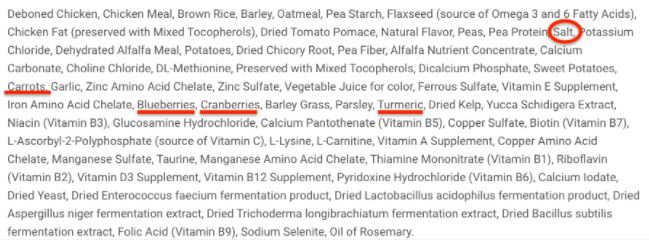
Tips & Tricks to Take Home
to the Store, to a Shop Page

You’ll want to keep that carb calculator in your back pocket and any pet food brand you’re interested in on speed dial. Besides that, remember what works and what doesn’t.
Ingredient splitting is a real practice that pet food brands are guilty of– when you read an ingredient label, you have to keep this in mind.
The Salt Divider Rule can tell you what a pet food is peddling versus what they’re actually dishing out to dogs.
Use this newfound trick and thank advocates like Marion Nestle and Rodney Habib for bringing it to the light of day.
The 1st 5 ingredient rule may be null and void, but the ingredient deck can still tell you plenty about the food.
Are there synthetic vitamins and minerals? Or do the vitamins and minerals come from whole foods alone?
Are they using real, whole foods or sub-ingredients and byproducts?
Do they use real, whole meat proteins or meat meals and meat & bone meals?
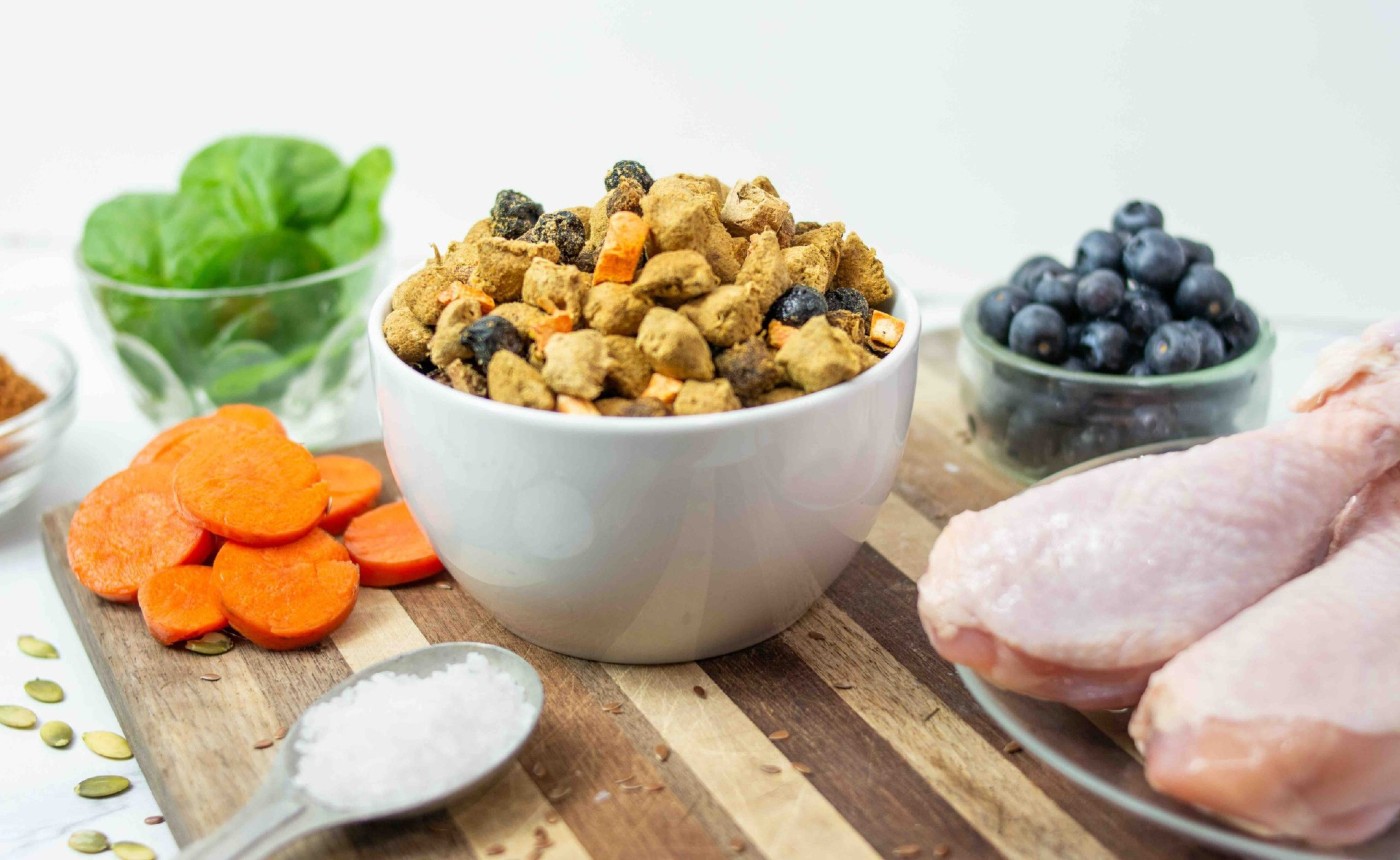
Now that you’re prepared, go out and get exactly what you want for your four-legger. Or take a look at the recipes created by Dr. Bessent. Formulated to provide her clients a better option, they may just be what you’re looking for, too.
Share this Post

Dr. Chris Bessent
Chris Bessent, DVM, MSOM, Dipl. OM, L.Ac. has over thirty years of experience in veterinary medicine including certificates in veterinary acupuncture, veterinary chiropractic and veterinary Chinese herbology. Imbued with Eastern philosophy and the knowledge that food is the foundation of health, Dr. Bessent also received her degree in veterinary nutrition and began to formulate recipes fit for a carnivore from nothing but whole foods. Currently, she divides her time between the Simple Food Project and Herbsmith, both of which are owned and operated out of her facilities in southeastern Wisconsin.

Kayla
Kayla is the Content Writer for The Simple Food Project. She has a cat named Professor Cat-Faced Meowmers, who goes by Kitty, and a goof of a dog, named Duck. She stays busy biking trails, playing board games, and searching for the next best craft beer.

